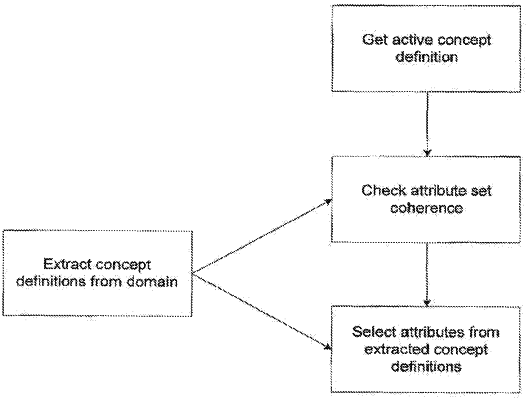| CPC G06F 16/36 (2019.01) [G06N 5/022 (2013.01); G06F 40/30 (2020.01)] | 15 Claims |

|
14. A system for analyzing synthesized concepts using a semantic processing protocol, wherein the synthesized concepts comprise a plurality of new virtual concept definitions derived from a set of real concept definitions by semantic processing, the system comprising:
at least one processor, operable to execute executable instructions stored in at least one tangible memory, to:
receive an input active concept definition from a cognitive agent via a system interface, wherein the cognitive agent includes at least one of a human user, a computer program receiving an input directly or indirectly from a human user, and a combination thereof;
extract a plurality of real concept definitions comprising attributes from at least one domain, wherein the domain is a corpus of data representing a knowledge domain;
match the active concept definition to the extracted real concept definitions;
synthesize a plurality of new virtual concept definitions from the real concept definitions by semantic processing, such that the virtual concept definitions form relationships between themselves, wherein the virtual concept definitions have a tree structure; and
analyze the plurality of real concept definitions for attribute set coherence within the plurality of new virtual concept definitions, and the real concept definitions within a context of the active concept definition, wherein analysis of the synthesized virtual concept definitions is determined based on a confidence gradient derived from the attribute set coherence.
|